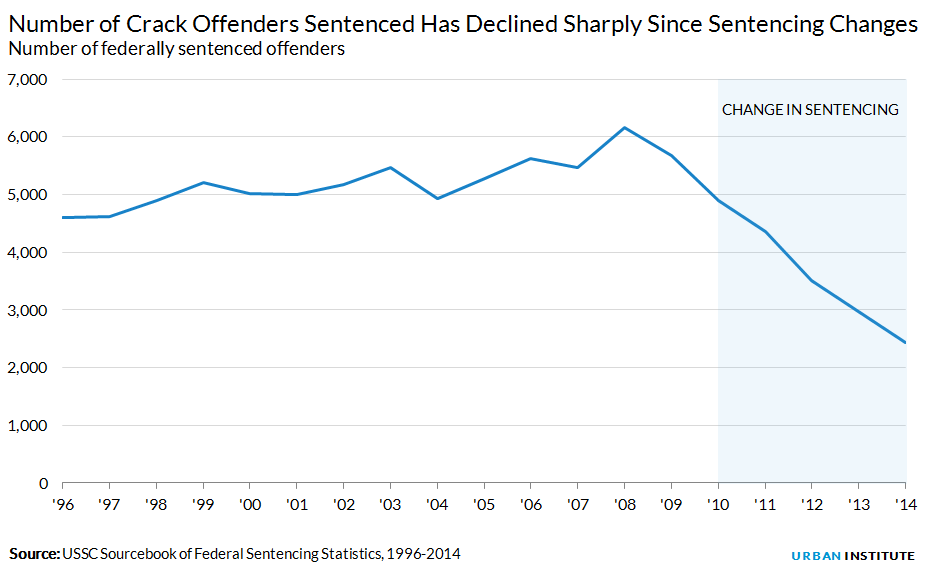
<p>In this May 20, 2009 photo, several hundred inmates crowd the gymnasium at San Quentin prison in San Quentin, Calif. (AP Photo/Eric Risberg)</p>
David Brooks recently waded into the mass incarceration debate with a column that was intended to be an indictment of the ways we talk about criminal justice reform. Oversimplified and lacking nuance, he argues that we are too quick to point to the “war on drugs” and mandatory minimums as the causes of mass incarceration.
Brooks notes that “social problems are invariably more complex than they look” and that the “obvious explanation is . . . often wrong.” I would agree with Brooks here, but he fails to live up to his own warnings. In attempting to debunk the importance of drug policy reform and the impact of harsh sentencing, he misunderstands the important ways in which policy and practice are related.
“Harsh Laws” are what empower prosecutors to drive mass incarceration
Brooks concludes that “harsh laws are not the main driver behind mass incarceration.” He points to the important work of Fordham University’s John Pfaff, who has written extensively on the role that prosecutors have played in driving mass incarceration. Pfaff has argued that an increase in felony filings per arrest, which is largely within the discretion of the prosecutor, has driven admissions to prison and overall prison population growth over the last 20 years.
I do not disagree with Pfaff’s research, but Brooks draws the entirely wrong conclusion from his findings. Prosecutors do not exist in a vacuum. Their importance in driving mass incarceration is a function of state legislatures passing “harsh laws” intended to send more people to prison and keep them there longer. Tough sentencing laws, including mandatory minimums, coupled with more restrictive back-end release policies provide prosecutors with the leverage to secure favorable plea bargains and long prison sentences. Remove the tough sentencing laws, and you will see changes in charging practices.
Want an example? Look at the federal system after the passage of the Fair Sentencing Act in 2010. Prosecutions for crack cocaine fell precipitously after Congress raised the weight thresholds that trigger mandatory minimums. In FY 2008, there were nearly 6,000 sentences for crack cocaine trafficking in the federal system. That number was cut in half to 2,912 by FY 2013. Either you believe that there was a profound and unprecedented decline in people selling crack cocaine, or prosecutors changed their charging practices because they could no longer easily secure a long sentence.

When it comes to reducing mass incarceration, drug policy reform matters
Brooks argues that the decline in the number of people sent to prison for a drug offense is evidence that the drug war didn’t contribute to the explosion in incarceration rates, and that drug policy reform alone will not solve mass incarceration. The reality is a bit more complex.
It’s true that rolling back more than 40 years of the policies and practices that resulted in mass incarceration will require a wide range of reforms targeting all types of offenses. The impact of drug policy reform on prison populations varies widely by state. Many states spent the 1980s and 1990s passing tough sentencing laws—the same laws that prosecutors have been using as leverage in their charging decisions. Some states have begun to roll back these laws, which have contributed to the declining admissions in drug offenses that Brooks notes. However, there is still a lot of work to be done, and it is incorrect to discount the importance of drug policy reform.
For example, halving admissions for drug offenses in Oklahoma would reduce that state’s prison population by 9 percent by 2021, compared with current projections. While not wholly sufficient to reduce mass incarceration, the impact of a reform of that type is hardly trivial. Doing the same thing in New York would only reduce the prison population by 1 percent over the same period.
It is critical to understand that mass incarceration is, by and large, a state and local issue. Statements about policy reforms using national data obscure the important differences in policy and practice that led to the increasing prison population and must be addressed in order to roll back mass incarceration.
Let’s build a future where everyone, everywhere has the opportunity and power to thrive
Urban is more determined than ever to partner with changemakers to unlock opportunities that give people across the country a fair shot at reaching their fullest potential. Invest in Urban to power this type of work.